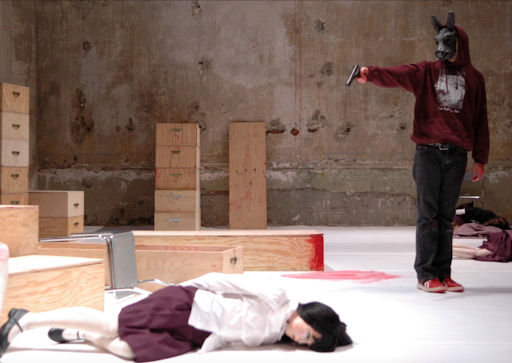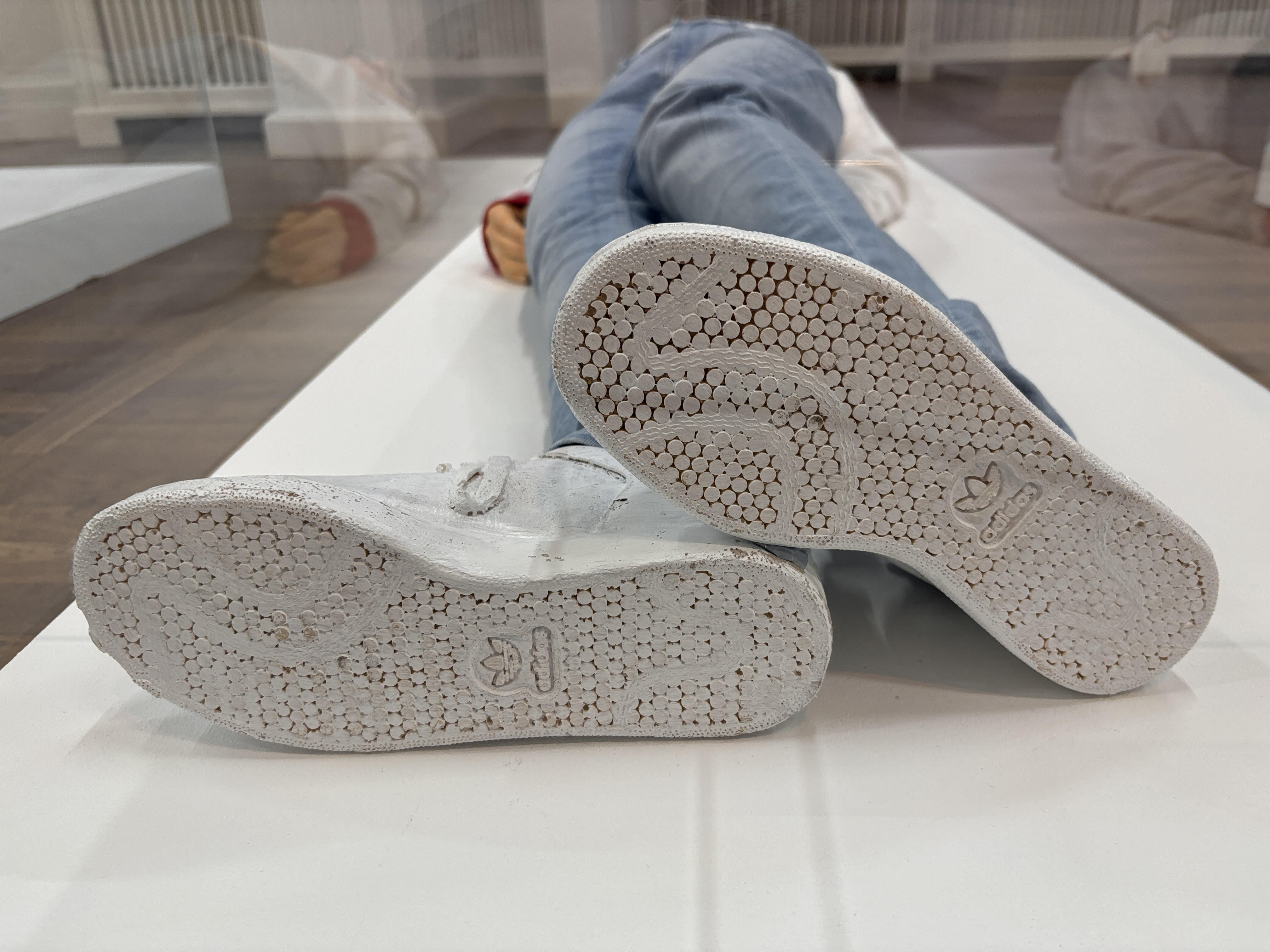"Meticulously Organised Dollhouse" Review of Gisele Vienne @ Haus am Waldsee, Berlin
Review / 31 March 2025 / By: Issey Kang / ★ ★ ★ ★
Gisele Vienne @ Haus am Waldsee, Berlin
Outside, snow falls and you take off your gloves. There is: a tie-dyed hoodie, a turned back, a pair of hand-cast Mary Janes. To the left, a teen-sized marionette, her feet bound in plaster Fila Disruptors. Behind her, a neon Soundcloud scene is scattered with galaxy print, puppets and luminescent sweets. This is ‘L’Etang’ 2021-ongoing..
The main room holds 12 identical adolescents. Dolls in glass boxes: 2003-2021. They lie in glass caskets, ordered and equally distanced. From inside, there is a secondary view of L’Etang (2020). Here, Vienne’s ability to choreograph space stands out: she dictates the audience’s ability to perceive the artworks, not just compositionally, but via the title. A play insinuates noise and movement, yet I was struck by the profound silence and immobility of the dolls. Directly above the neatly lined glass coffins are identical wooden boxes, bloody and open, remnants of the show I Apologize 2004-2017. Scattered and smeared with gestural marks, tiny handprints: suggestions of action. I get the impression that this is where the dolls “come from”.
The other connotations of “Play” is the anthropomorphic: teen-sized dolls, girls playing with dolls, the gallery as a dollhouse and the sculpture as a set. A concern with the semiotics of the body is characteristic of Vienne's practice. Her decision to use adolescent figures relates to her vision of the body as battleground: “Pallid complexions, blank stares, frozen faces sometimes splattered with blood and tears…like clues to a culture of repressed violence that haunts our myths of innocent, purity, whiteness.” (Elsa Dorin ‘The Colour of Anguish’ 2021).
What do the dolls represent and what do they tell us about ourselves?
Vienne employs the doll's form as it allows for projected consciousness. The doll's ability to be projected upon enables them to be characterised: “They are also Snow White and Sleeping Beauty; they are the bosom blonde who runs screaming into the forest, believing she is escaping the serial killer” (The Colour of Anguish).
The form of the dolls remains the same, yet each is personified separately through styling. In her styling, Vienne references culturally built up languages, how style can denote personality through the idea that “It’s not only natural but cultural to perceive” (Interview with Gisèle Vienne and Anna Gritz). Vienne adds to the canon of dressing up frequented by artists like Laurie Simmons, Mathilde Ter Heijne and Cindy Sherman. Sherman’s photographic characterisation is a further influence, Vienne captures dolls and puppets as a cast in the photographic series 63 PORTRAITS 2003 - 2024. Here, the dolls are equal parts sad, dejected and self-conscious.
Vienne cites subculture as a crucial backdrop to her work. This is expressed sartorially through delicately articulated styling—a baby pink lace-trimmed top peaks out from beneath a Bambii jersey. Heavy metal merchandise is paired with a monster mask, adjacent to badly applied New Romantic makeup and sportswear.
As our present era emerges as a Victorian parody, it is natural that steampunk is everywhere. In this aesthetic world dolls, automatons and puppets convey anxieties surrounding developments in robotics. Philosopher Kathe Hicks Albrecht believes steampunk has turned from subculture to philosophy: “Many proponents of today’s steampunk aesthetic are part of the burgeoning do-it-yourself (DIY) subculture”. As our technological developments speed up, technocrats emerge, genocide and war rage, Gisèle Vienne’s dolls feel strangely poignant for their rebellion against “mass production…it is this group which interests most directly align with steampunk” (Kathe Hicks Albrecht ‘The Machine anxieties of Steampunk’ 2024)
As Open AI prepares to launch the humanoid robot Neo in 2025, Vienne’s ‘A Puppet Play’ takes on a more urgent meaning. Perhaps we can learn from Vienne ’s understanding of the power of articulation in stage setting, styling, movement direction, and craft, as well as the underlying sensibility of care in the perception of humans and the post-human form.

